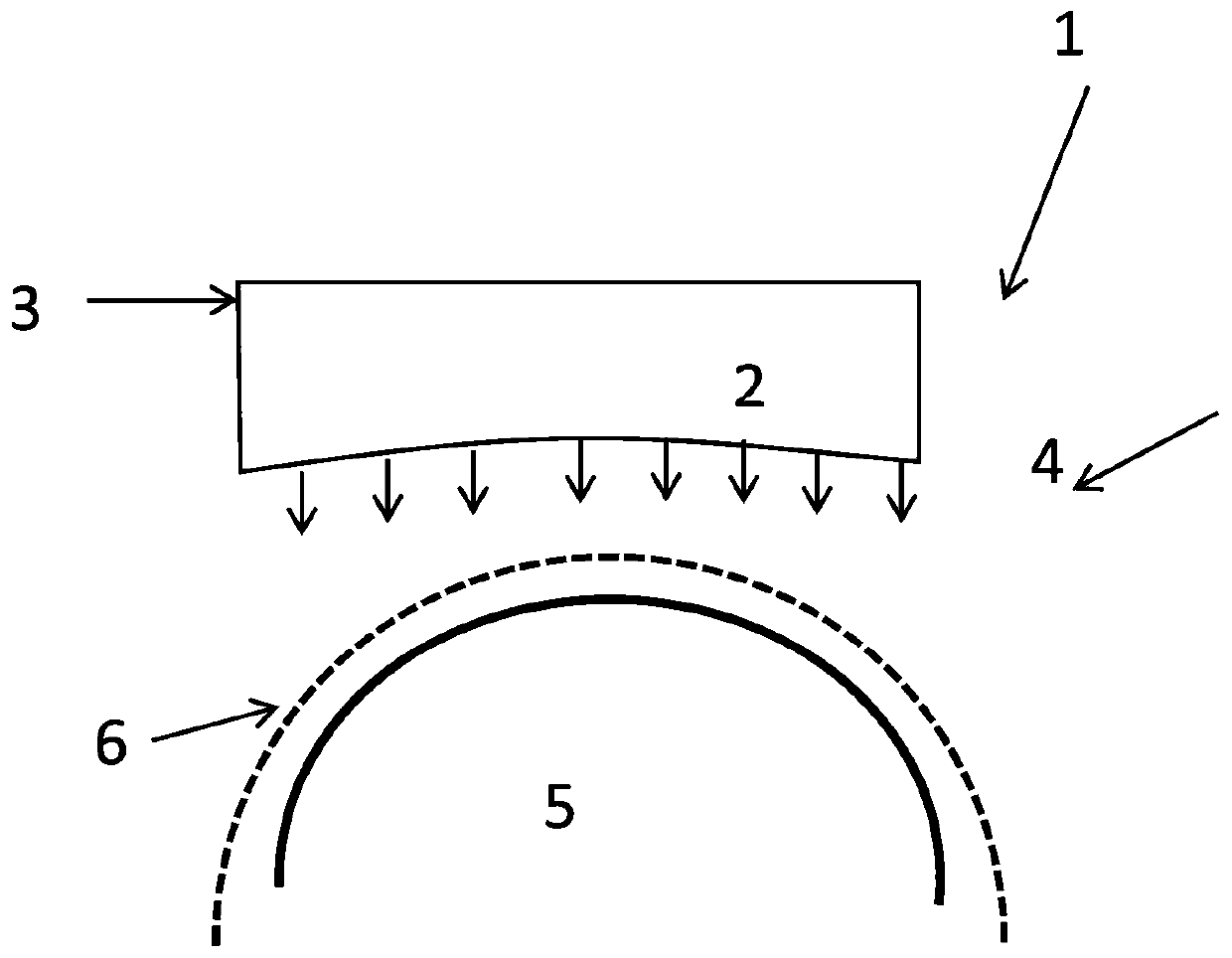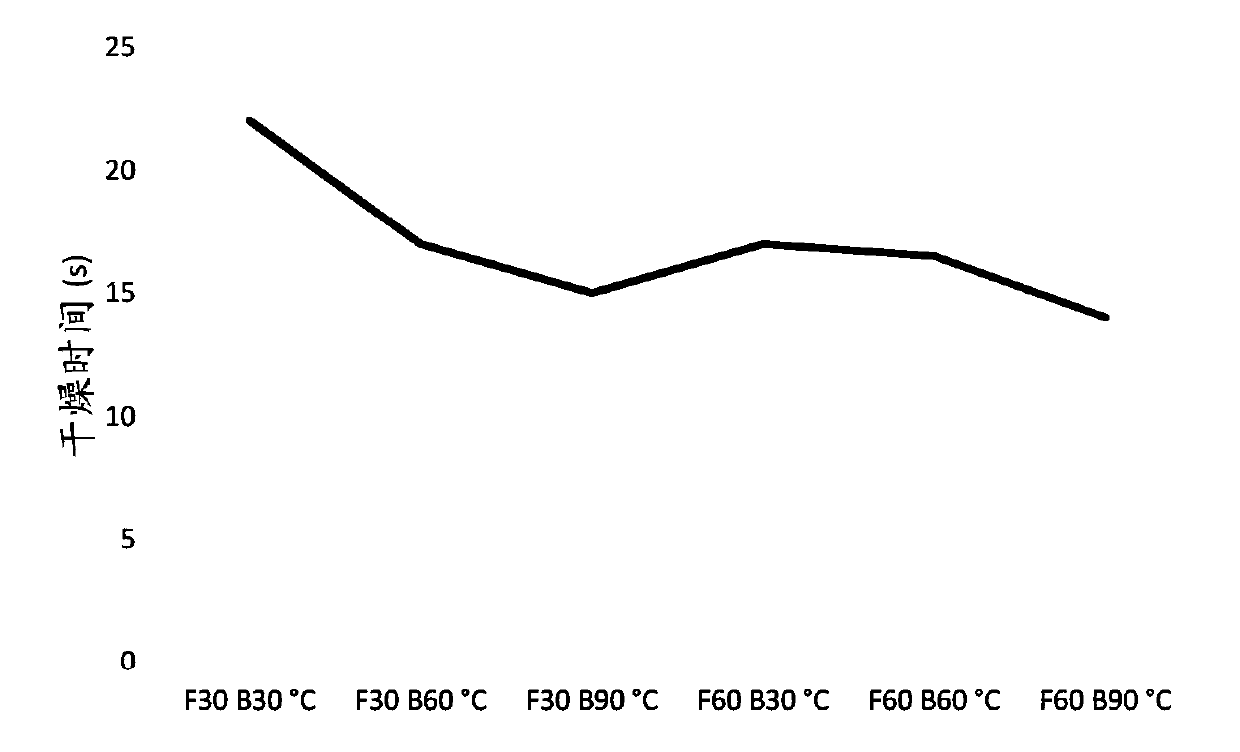A method for the production of a film comprising microfibrillated cellulose, a film and a paper or paperboard product
A technology of microfibrillation and microfibrils, which is applied in the direction of post-treatment modification of cellulose pulp, layered products, textiles and papermaking, etc., can solve the problems of slow efficiency and so on
- Summary
- Abstract
- Description
- Claims
- Application Information
AI Technical Summary
Problems solved by technology
Method used
Image
Examples
Embodiment 1
[0048] figure 1 A schematic diagram of the method according to the invention is shown.
[0049] The drying device (1) according to one embodiment of the invention comprises an impingement hood (2) to which hot air (3) is added. The hot air is then blown out through multiple nozzles (4) at a certain temperature and speed. The drying device (1) also comprises a carrier (5) in the form of a heated plate and the fibrous web (6) is guided through the drying device on the plate to blow hot air onto the fibrous web to form the MFC film.
Embodiment 2
[0051] The drying rate at different temperatures of the air blown onto the fibrous web in the drying plant was investigated.
[0052] A fiber suspension comprising 70% by weight of MFC based on total dry weight was cast onto a metal belt at a solids content of 4%. The metal strip is heated to a specific temperature before casting, a strip of 110°C means that the temperature of the metal strip at the end of drying is 110°C. The same applies to the samples with 120°C and with 130°C, respectively. The MFC films at 110°C, 120°C and 130°C were only dried by the heated metal melt and could be used as reference samples. The cast web was then dried until it was readily peelable, with a dry content of about 90% by weight.
[0053] Three samples were also dried in an impingement dryer after casting on the heated belt. The samples were prepared by casting the MFC suspension onto a heated metal belt (all samples were cast on a belt at a temperature of 110°C) and then dried in an imping...
Embodiment 3
[0060] A suspension at a concentration of 4% by weight comprising 70% by weight of microfibrillated cellulose based on total dry weight was cast onto a heated metal belt to form a fibrous web. The fibrous web is then guided through the impingement dryer on the same metal belt. The web was dried in an impingement dryer where hot air was blown against the cast fibrous web. Different temperatures of the metal belt and furnish before casting were tested to see how this affects the drying time of the web.
[0061]The drying time is then measured until the film has a dry content of at least 90% by weight. The drying rate during the test was 80kg(H2O) / m 2 / h.
[0062] The test results are shown in image 3 middle. F30 indicates that the temperature of the furnish is 30°C, B30° indicates that the temperature of the belt is 30°C, and the same is true for the other samples. from image 3 As is evident in , the drying time of the MFC film is reduced when the tape has a very high t...
PUM
| Property | Measurement | Unit |
|---|---|---|
| density | aaaaa | aaaaa |
| density | aaaaa | aaaaa |
| diameter | aaaaa | aaaaa |
Abstract
Description
Claims
Application Information
 Login to View More
Login to View More - R&D
- Intellectual Property
- Life Sciences
- Materials
- Tech Scout
- Unparalleled Data Quality
- Higher Quality Content
- 60% Fewer Hallucinations
Browse by: Latest US Patents, China's latest patents, Technical Efficacy Thesaurus, Application Domain, Technology Topic, Popular Technical Reports.
© 2025 PatSnap. All rights reserved.Legal|Privacy policy|Modern Slavery Act Transparency Statement|Sitemap|About US| Contact US: help@patsnap.com



